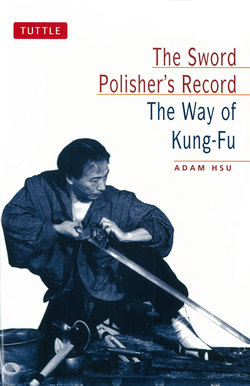Читать книгу Sword Polisher's Record - Adam Hsu - Страница 8
ОглавлениеPreface
When I arrived in San Francisco from Taiwan in 1978, my dream was to help promote and preserve the ancient arts that had been handed down by my forebears. I have studied kung-fu since I was a young boy, learning from my father and then from the best teachers I could find in Taiwan. I feel fortunate to have been exposed to the ancient treasures of kung-fu, and view it as my duty to share those treasures with others in the United States and elsewhere.
In 1980, I went Los Angeles to discuss writing articles for Black Belt magazine with Jim Nail, who was editor of the publication at that time. He approached me about writing a monthly column for the martial arts magazine. When I returned to San Francisco, I felt unclear as to what direction to take with the column. Words and theory are not a substitute for the physical and mental training required to polish one’s kung-fu. Yet, they are an essential part of the learning process, allowing the mind to process commands and concepts that help the body move in a special, kung-fu way.
The meaning of words, however, can be bent and distorted to have a detrimental effect on kung-fu. In fact, today kung-fu is like a sword of incomparable value that has lost its shine and sharpness-a result of the many misconceptions spawned from the words and images in books, movies, TV shows, and video games.
The errant teachings of unqualified instructors have also greatly contributed to the uncertainty of kung-fu’s future. Students desiring the real kung-fu are unwittingly cheated by instructors promoting fraudulent histories, self-made family trees, and so-called “secret” teachings.
In addition, mainland China’s government-produced wushu (martial art) has jeopardized the future of traditional kung-fu. The movements in the popular wushu forms promoted throughout the world contradict almost all the fundamentals of kung-fu.
Based on kung-fu becoming an endangered discipline, it became obvious to me that the column needed to help restore kung-fu’s definition, purity, principles, and basic theory. “The Sword Polisher’s Record,” as I named the column, became my way to polish the kung-fu sword, clearing up the misconceptions that are causing it to become dull and rusty.
This book includes many of the original “The Sword Polisher’s Record” columns printed in Black Belt and Wu Shu Kung-fu magazines. Additional articles that first appeared in Inside Kung-fu magazine are also included to provide more depth on some of the topics.
The book is organized into eight interconnected sections, each examining a different aspect of kung-fu. The first sections deal with the foundations of kung-fu. Without developing a true foundation, no matter the style, there is no kung-fu. In subsequent sections, I try to bring to light important concepts and principles related to kung-fu styles and forms, as well as usage and training. Finally, I discuss the future of kung-fu and its place in our lives.
I hope you find The Sword Polisher’s Record useful. My dream will be fulfilled if we can restore this damaged treasure so that its beauty and power can enrich us today and in the generations to come.
—Adam Hsu
October, 1997
